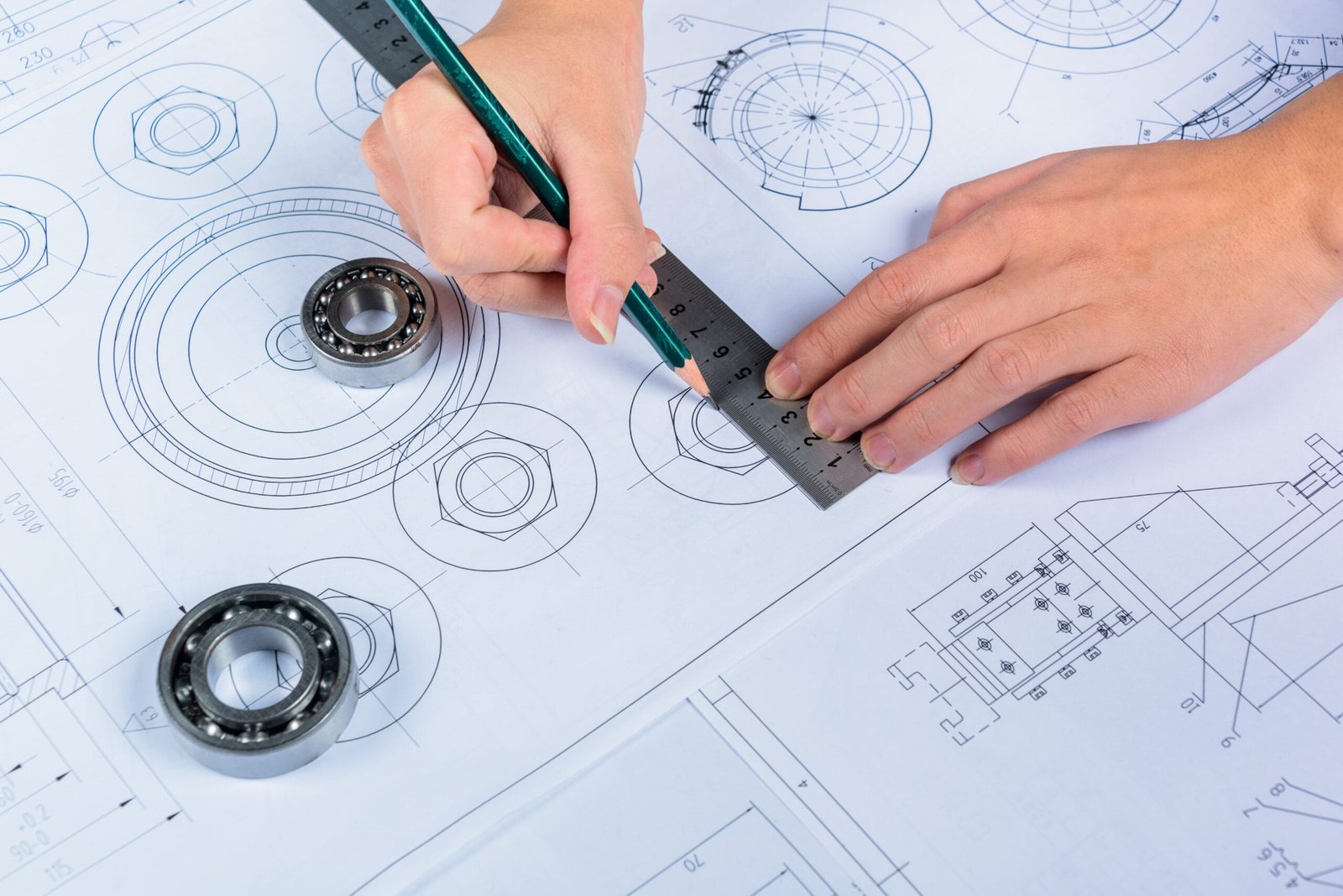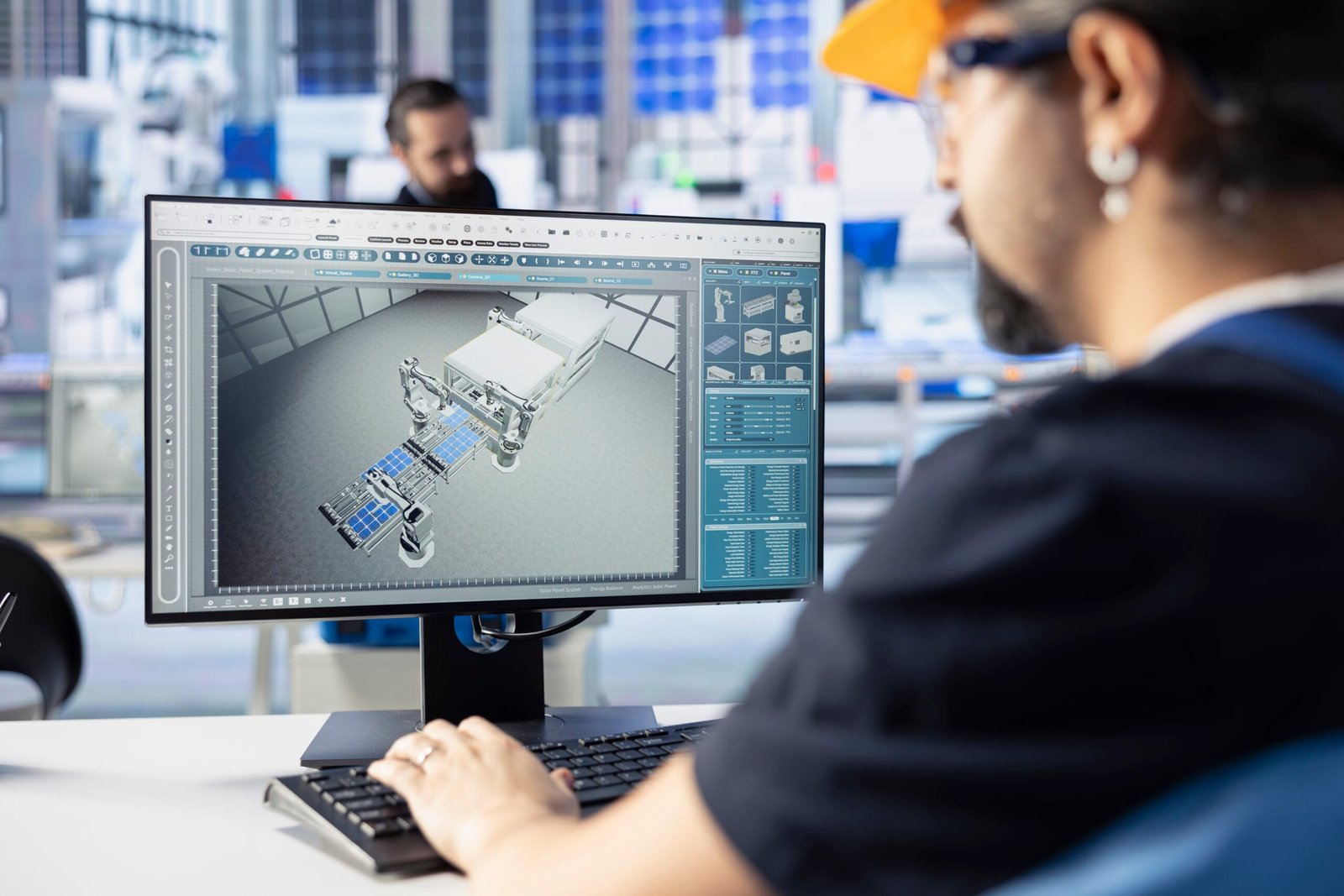Description:
Discover How 3D Modeling Improves Design Accuracy in engineering, architecture, and manufacturing. Learn about its benefits, applications, and the transformative role it plays in reducing errors and improving product quality.
Introduction
In today’s fast-paced and highly competitive design environment, accuracy is not just a preference—it’s a necessity. Whether you’re designing machinery, consumer products, buildings, or complex industrial systems, even the smallest error can result in costly delays, rework, or product failure. This is where 3D modeling steps in as a revolutionary tool that has transformed the way professionals visualize, develop, and execute their ideas.
Gone are the days when 2D drawings ruled the design process. With the advent of 3D modeling software, engineers and designers can now create lifelike digital models that simulate real-world conditions with incredible precision. In this blog, we’ll explore how 3D modeling dramatically improves design accuracy, reduces human error, and leads to better decision-making throughout the entire project lifecycle.
What is How 3D Modeling Improves Design Accuracy?
3D modeling is the process of creating a mathematical, three-dimensional representation of an object using specialized software. This digital model replicates the geometry, dimensions, and physical properties of the actual product or structure.
Unlike 2D drafting, which provides only length and width, How 3D Modeling Improves Design Accuracy introduces depth—giving designers a realistic and interactive view of their projects. It allows teams to view and manipulate objects from all angles, inspect assemblies, simulate real-world functions, and identify design flaws before physical production.
Ways How 3D Modeling Improves Design Accuracy
Let’s break down the specific ways 3D modeling enhances accuracy across various design processes:
1. Detailed Visualization of Concepts
One of the greatest advantages of How 3D Modeling Improves Design Accuracy is the ability to visualize designs in a fully realistic way. Designers can zoom in, rotate, and view components from every angle. This comprehensive view makes it easier to spot dimensional errors, spatial conflicts, or inconsistencies that are hard to detect in 2D drawings.
For example, in architecture, a 3D model can reveal if a door opens into a blocked hallway. In mechanical design, it might show if a bolt clashes with a moving part. This level of visibility helps correct mistakes early in the process.
2. Precision Measurements and Scaling
How 3D Modeling Improves Design Accuracy software allows for exact dimensions to be input and maintained throughout the model. Every angle, hole, notch, and surface can be accurately measured and scaled, leaving little room for guesswork.
Whether you’re modeling an engine component or a building framework, the tools available in software like AutoCAD, SolidWorks, or Blender let you measure tolerances down to fractions of a millimeter—far more precise than manual drafting or 2D design methods.
3. Early Error Detection and Conflict Resolution
How 3D Modeling Improves Design Accuracy enables interference checking, where multiple parts are combined in an assembly to check for spatial conflicts. These checks can immediately show whether parts collide, overlap, or fail to fit together as intended.
In construction, this might involve clash detection between plumbing, electrical, and HVAC systems. In product design, it can highlight overlapping parts in a mechanical assembly. Detecting and resolving such issues during the design phase avoids expensive rework later.
4. Simulation of Real-World Behavior
Advanced How 3D Modeling Improves Design Accuracy tools allow for simulations, such as stress analysis, motion studies, thermal analysis, and more. These simulations help ensure that a design will perform accurately under expected real-world conditions.
For instance, a structural beam modeled in 3D can be tested for bending under load, ensuring it won’t fail when in use. This removes the guesswork and enables engineers to fine-tune designs based on real performance, not just assumptions.
5. Better Communication Between Teams
How 3D Modeling Improves Design Accuracy are easier to understand than technical 2D drawings. Clients, non-technical stakeholders, and cross-functional teams can view and interpret the models clearly without needing deep engineering knowledge.
When everyone sees the same digital model, it reduces misinterpretation and ensures all team members are aligned. This shared understanding minimizes errors due to miscommunication, helping everyone work more accurately and efficiently.

6. Quick Modifications and Iterations
In traditional 2D drafting, making changes often required redrawing entire sections. With 3D models, modifications are much easier. Designers can update one part of the model, and the changes automatically reflect across connected components or assemblies.
This reduces the chance of missing an adjustment or introducing inconsistencies, which often lead to mistakes. The faster iteration cycle also means that accuracy improves as designs evolve and are reviewed more frequently.
7. Improved Manufacturing and Prototyping
Modern manufacturing heavily relies on computer-aided manufacturing (CAM), where 3D models are directly used to generate instructions for CNC machines or 3D printers. Accurate models ensure that physical components are produced exactly as designed.
If a design includes a part with tight tolerances or complex geometry, the 3D model ensures that machines interpret those features with precision. This eliminates manual interpretation and potential manufacturing errors.
8. Consistency Across Project Phases
From conceptual design to fabrication and maintenance, a single 3D model can serve as the source of truth. This consistency ensures that the design remains accurate as it moves through different departments and project stages.
In industries like aerospace or automotive, where precision is critical, having a single reliable digital model throughout the product’s lifecycle significantly enhances accuracy, traceability, and quality assurance.

Real-World Applications at DesignHok
At DesignHok, 3D modeling is used across various design services to achieve the highest levels of accuracy:
- Mechanical Design Projects: 3D models ensure tight tolerances and perfect fits in moving assemblies.
- 3D Rendering Projects: Highly accurate models are used to create photorealistic visuals that align with real-world dimensions.
- Architectural Projects: 3D visualization ensures that structural, electrical, and plumbing systems coexist without conflict.
- Prototyping: Models are directly converted into physical prototypes with confidence that the dimensions will be accurate.
By integrating 3D modeling into every stage of the workflow, DesignHok delivers error-free, visually stunning, and functionally sound projects.
Conclusion
In every industry where precision matters, How 3D Modeling Improves Design Accuracy has become a critical tool. It enhances design accuracy by offering better visualization, precise measurements, error detection, and real-world simulations. It simplifies communication, accelerates iteration, and ensures that the final product perfectly matches the original concept.
As businesses continue to demand faster turnarounds and higher-quality results, the adoption of 3D modeling will only grow. For companies like DesignHok, it’s not just a tool—it’s a competitive advantage that helps deliver excellence every single time.
FAQs: How 3D Modeling Improves Design Accuracy
Q1: Can 3D modeling completely eliminate design errors?
While it significantly reduces errors, human oversight and assumptions can still introduce mistakes. However, 3D modeling makes it easier to detect and correct issues early.
Q2: Is 3D modeling useful for small businesses or only for large firms?
3D modeling benefits all business sizes. Even small design projects can gain from improved accuracy and efficiency.
Q3: Which software is best for accurate 3D modeling?
Popular options include SolidWorks, AutoCAD, Fusion 360, Blender, and Rhino. The choice depends on the industry and type of project.
Q4: How does 3D modeling help in reducing costs?
By minimizing design errors, reducing rework, and improving communication, 3D modeling cuts project costs and shortens timelines.
Q5: Is it difficult to learn 3D modeling?
With practice and training, even beginners can master basic 3D modeling. Many tools offer user-friendly interfaces and online tutorials.
Q6: How does DesignHok use 3D modeling in client projects?
DesignHok uses 3D modeling to develop accurate designs, visualize concepts, simulate performance, and ensure manufacturability—all tailored to client needs.





